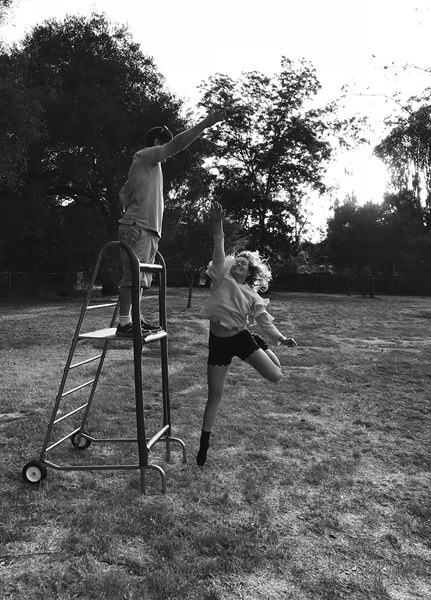
HIGHEST HIGH-FIVE
first performed on June 17, 2018
Ship in the Woods Art and Music Festival, Felicita County Park, Escondido, CA
performed once in 2018
BRIAN D. BLACK
San Diego, CA
583857180b583857180r583857180i583857180a583857180n583857180b583857180l583857180a583857180c583857180k583857180.583857180a583857180r583857180t583857180i583857180s583857180t583857180@583857180g583857180m583857180a583857180i583857180l583857180.583857180c583857180o583857180m
instagram.com/brian_d_black
HIGHEST HIGH-FIVE
BRIAN D. BLACK
The “Highest High-Five” is an embodiment of my interest in isolating quantifiable aspects of athleticism and assigning a context for them outside their expected parameters. I am principally interested in numeric values that can potentially determine athletic performance outcomes. As I study statistics on athletes, I am fascinated by the dualism that is inherent in this type of data collection: it sets the groundwork for both objectification and idealization of the athlete. An athlete has internal motivation and exceptional drive, but is rated and judged on a series of specific numeric tasks. And in the “Highest High-Five” it is my intention for the audience watching and those participating to experience a small aspect of this duality.
As a cultural phenomenon, the high-five has a historical connection to basketball. This connection directed the physical parameters I assigned the performance. For each person that wants to attempt the high-five, I walk up the ladder and stand on the platform. Once in position, I extend my arm and measure the distance from the bottom of my hand to the ground at ten feet. The ten-foot distance from the ground to the bottom of my hand is equal to the regulation height of a basketball rim. In theory if a participant can jump high enough to reach a basketball rim, they should be able to complete the high-five. Each participant is given three opportunities to connect with my hand and complete a high-five. If a participant is successful, I award them a signed Certificate of Athletic Achievement.
Given the height of the jump, the performance favors individuals six feet tall or taller. This built-in physical prejudice naturally deters some people from even attempting the jump while for others it is public affirmation of their physical stature and/or athletic ability. I am interested in providing a situation that elicits both these responses.